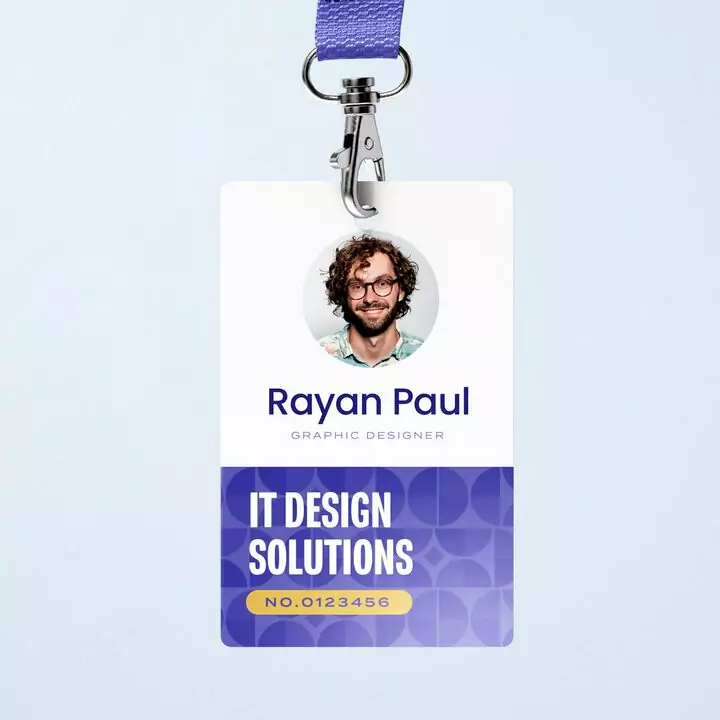
In today’s fast-paced and security-conscious world, ID card printing has evolved significantly, integrating cutting-edge technology to enhance both functionality and safety. Whether it’s for businesses, educational institutions, or events, the importance of ID cards in establishing identity, ensuring security, and facilitating access control cannot be overstated. This article delves into the advancements in ID card printing technology and how these innovations contribute to heightened security.
The Evolution of ID Card Printing Technology
The journey of ID card printing has seen remarkable transformations over the years. Initially, ID cards were simple, laminated pieces of paper with basic information and a photograph. However, as the need for better security and more durable cards grew, so did the technology behind their production.
Digital Printing: The advent of digital printing revolutionized ID card production. It allowed for high-quality, full-color images and text to be printed directly onto PVC cards. This technology ensured that ID cards were not only aesthetically pleasing but also durable and resistant to wear and tear.
Smart Cards: The integration of smart card technology marked a significant leap forward. Smart cards contain embedded microchips that can store and process data. These cards are used for a variety of purposes, including secure access control, cashless payments, and data encryption, making them indispensable in modern security systems.
RFID and NFC Technology: Radio-Frequency Identification (RFID) and Near Field Communication (NFC) are other significant advancements. RFID-enabled ID cards can be read from a distance, facilitating smooth access control and attendance tracking. NFC technology allows for secure, contactless interactions, enhancing both convenience and security.
Enhancing Security with Advanced Features
Modern ID card printing technology incorporates a range of security features to prevent counterfeiting and unauthorized access. These features are crucial in maintaining the integrity and trustworthiness of ID cards.
Holograms and Watermarks: Adding holograms and watermarks to ID cards is a common practice to deter counterfeiting. These elements are difficult to replicate and provide a visual cue for authenticity.
UV Printing: Ultra-violet (UV) printing involves embedding information or images on the card that are only visible under UV light. This adds an additional layer of security, making it challenging for counterfeiters to produce fake IDs.
Microtext and Guilloche Patterns: Microtext is text printed at a size that is nearly impossible to read without magnification. Guilloche patterns are intricate, fine-line designs that are equally challenging to reproduce. Both features significantly enhance the security of ID cards.
Biometric Integration: Some advanced ID cards now incorporate biometric data, such as fingerprints or facial recognition. This integration ensures that the person presenting the ID card is indeed the authorized user, providing an unparalleled level of security.
The Benefits of Embracing Modern ID Card Printing
Adopting modern ID card printing technology offers numerous benefits beyond enhanced security. These advantages extend to efficiency, cost-effectiveness, and user experience.
Streamlined Operations: With RFID and NFC technology, organizations can streamline their operations, from managing employee attendance to controlling access to restricted areas. This not only saves time but also reduces administrative overhead.
Cost Savings: Although the initial investment in advanced ID card printing technology may be higher, the long-term benefits are significant. Durable, high-quality cards reduce the need for frequent replacements, leading to cost savings over time.
Improved User Experience: Modern ID cards are designed with user convenience in mind. Features such as contactless access and multifunctional capabilities (e.g., serving as an ID, payment card, and access key) enhance the overall user experience.
Future Trends in ID Card Printing
As technology continues to advance, the future of ID card printing holds even more exciting possibilities. Emerging trends include the use of blockchain technology for secure, tamper-proof ID cards, and the integration of augmented reality (AR) for enhanced interactivity and information display.
Blockchain Technology: Blockchain can provide a secure, decentralized method for verifying and storing ID card data. This technology ensures that any attempt to alter the information on the card is easily detectable, thereby preventing fraud.
Augmented Reality: AR can bring a new dimension to ID cards by enabling users to access additional information or features through their smartphones or AR glasses. For example, scanning an ID card could provide instant access to the cardholder’s profile, credentials, or event details.
Conclusion
The field of ID card printing has come a long way, embracing technological advancements to enhance both security and functionality. From smart cards to RFID technology, modern ID cards are equipped with features that make them indispensable tools in today’s security landscape. As technology continues to evolve, the future of ID card printing promises even more innovative solutions, ensuring that security and convenience go hand in hand.


